I talked to couple of people who happened to be in that situation yet I couldn’t fully understand how it was/is to live in the divided city, it’s still too abstract to me. I heard stories of teachers who lived in another country and had to cross the bridge with the border each day to go to work or of Sunday walks along the border, full of conversations what’s on the other side. It all sounded like a movie to me yet it was the reality to a lot of people.
So what are some of the divided cities that I visited lately and that fascinated me big time that I’m ready to go back to explore more?
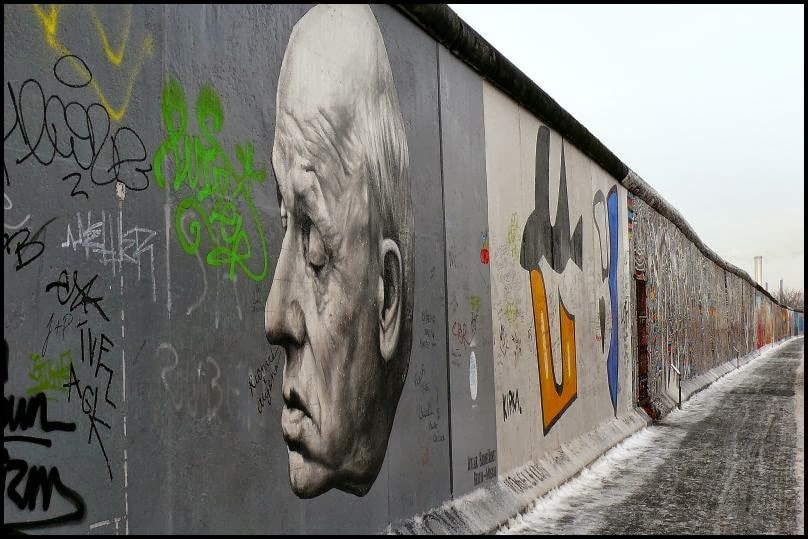
Divided cities in Europe: Berlin, Germany
Probably the most famous divided city in Europe, with Berlin Wall spreading through it for 28 years. Over that time around 200 people lost their lives trying to get to the other side of the Wall, now small white crosses around the city commemorate them. The Wall was 156kms long and violently parted family and friends that were left behind on the both sides of the structure. There’s a really good and funny movie about young people living just next the the Wall in East Berlin, called “Sonnenallee” and it shows how the life back in these times looked like.
These days we can see where exactly the Wall stand as it’s clearly marked on the ground all over Berlin. Some of the main tourists points were just behind it – Brandenburger Gate was on the East side while Reichstag, that now is just few steps away, was on the West side. But the most famous remnants of the Wall are Checkpoint Charlie, the control point between East and West Berlin and the East Side Gallery. The later one is the over 1 km long section of the Wall that stands in the same place ever since it was built on the bank of the Spree river. Now it’s all covered in murals and graffiti, showing the best examples of Berlin’s street art and reminding both inhabitants and tourists of the difficult past of the city.
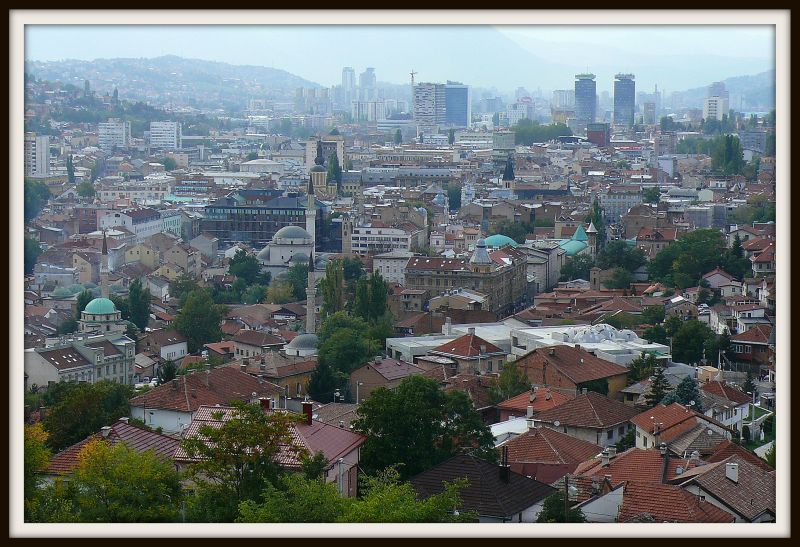
Divided cities in Europe: Sarajevo/Istocno Sarajevo, Bosnia and Herzegovina
I know this might sound ignorant of me but before I visited Sarajevo last year I didn’t know it’s a divided city too. After the violent civil war that happened 20 years ago the Dayton Agreement was signed. According to it Bosnia and Herzegovina is made of Federation of Bosnia-Herzegovina and Republika Srpska. The capital city, Sarajevo, was divided too, into Bosniak and Bosnian Serb part.
What most of the tourists tend to visit in Sarajevo lies in the Bosniak part. There’s the Austro-Hungarian architecture, the Ottoman district of Bascarsija, the multicultural atmosphere of the old charm. But if you plan to take the bus further to Serbia you’ll have to get to Istocno Sarajevo (Eastern Sarajevo) like I did. It’s quite a long journey to the last stop in the Lukavica district, on the way there are lots of still destroyed block of flats, with post war bullet holes… Few steps away from where the trolley ends its route the so called border is. Even if there are no signs telling so it is clear where Federation of Bosnia-Herzegovina ends and Republika Srpska starts. I wish I could have more time to explore this part of Sarajevo too but at least I have a reason to go back. Bosnia and Herzegovina and its troublesome recent history were one of the most difficult experience of my recent travel yet I so would love to get to know it better and deeper!

Divided cities in Europe: Zgorzelec, Poland/Görlitz, Germany
These two used to be one city, founded in 11th century. Up until 1945 what now is known as Zgorzelec was just the suburb and the main part of the town was located across the river. But during the Potsdam Conference it was decided that the Lusatian Neisse will be a border river hence Görlitz was divided into two cities in two different countries. Even if Görlitz was one of the very few German towns that weren’t all that destroyed during the II World War, in 1945 the bridge connecting these two parts of the city was blow up (eventually it was reopened many years later, in 2004).
Most of the important, beautiful buildings are on the German side of the city and this one is definitely worth visiting. There’re great examples of architecture from all historical periods spread all over Görlitz. But it’s worth to go to the other side of Lusatian Neisse and check the Polish part too as the riverside is neatly renewed and the views to Germany and especially the cathedral overlooking the city are really decent. The only thing that bothered me in Zgorzelec and especially in Görlitz was how empty it was. And I know it wasn’t just one time thing and my luck as everyone who visited these cities was disturbed by this as well. When I was there it was Saturday afternoon, the beautiful autumn weather yet there were not many people to be seen around. All these beautiful city houses clearly needed more inhabitants and that was pretty depressing to look at. It’s quite a big issue in East Germany that cities loose citizens who move to western parts of the country looking for better paid jobs. In Görlitz the city encourages Polish people to move there and prices of flats are really attractive. Well, empty or not it is well worth visiting Görlitz as the city is incredibly beautiful. Did you know it played in couple of movies, pretending to be Berlin or Paris?
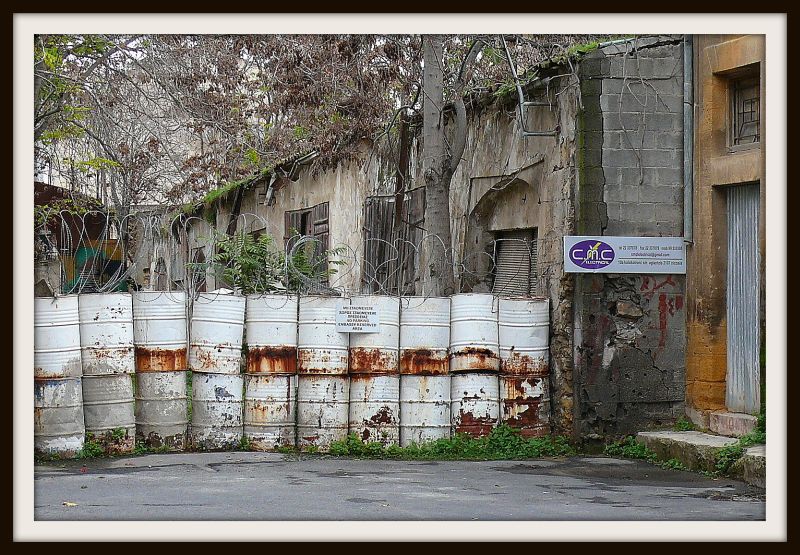
Divided cities in Europe: Nicosia/Lefkosia, Cyprus
This is the only capital city in the world that remains divided up to these days (since 1964). Literally in the middle of the city there are barbed-wire entanglements and sandbags, surrounded by abandoned houses – when you walk around the Greek part of the city and suddenly there are less and less people around and the life kind of stops it means you’re getting close to the UN Buffer Zone. It was established in 1974 and runs across the whole island and the capital city, dividing Cyprus to the Greek and Turkish part. 9 years after that event North Cyprus self declared its independence but was recognized only by Turkey.
Since Cyprus as a whole country joined European Union in 2004 it is possible now to visit the northern part of the capital, called Lefkosia. And it is quite an adventure. There’s a border crossing like in many other countries yet here you’re technically still in the same country! First your passport/ID is controled by UN and then, after few minutes walk on no man’s land (where UN soldiers reside) you arrive at the Turkish border point when you get a visa and are free to visit the Turkish Republic of Northern Cyprus. Lefkosia is like a different world from its Greek sister. It’s dirty, chaotic, destroyed and definitely has a charm and soul. I loved walking around the narrow streets, surrounded by kids playing and cats wandering. It felt like a different, non-touristy and unique world to explore. There were impressive catholic churches turned into mosques, busy markets, older men playing cards and sipping coffee. All the best that can be found in Turkey yet much better. After spending few hours in Lefkosia I really wanted to explore Nicosia a little bit too but it wasn’t even half as good and after less than 1 hour I was ready to leave…
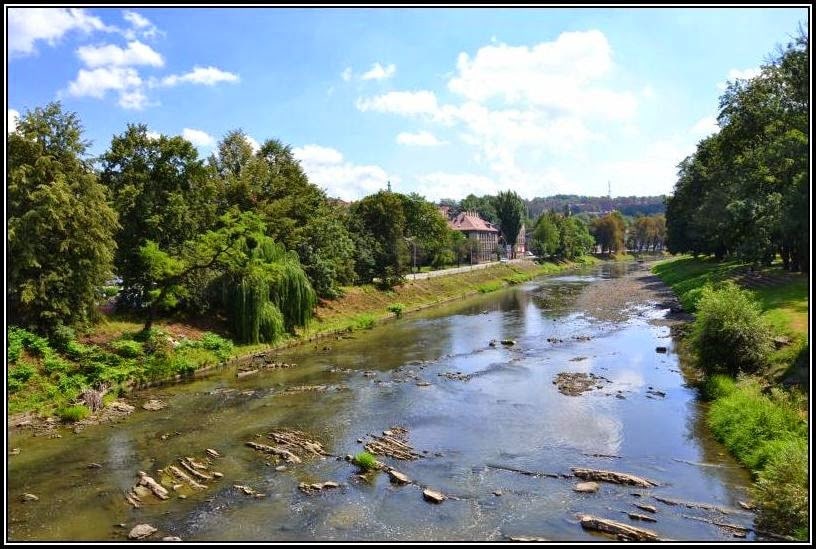
Divided cities in Europe: Cieszyn, Poland/Český Těšín, Czech Republic
Another city thats one part is in Poland. Cieszyn is one of the oldest cities in my country, founded in IX century. It used to be a very important place in the Polish history, the center of the Duchy of Teschen, spread on both sides of Olza river. After the Austro-Hungarian Empire collapsed and countries got their independent back the border between Poland and Czech Republic was set on this small river, dividing Cieszyn into two parts. Bigger part of the city, together with the center and all important monuments remained in Poland while Český Těšín had to build its own identity from scratch and now is a great example of modern, post-war architecture.
Cieszyn was my biggest discovery of this year so far. This city is so close and is so amazing yet it was this summer when I finally visited in properly. And fall in love right away. The narrow, cobbled streets winding up and down, the beautiful houses remembering the golden times of the city, the cross-cultural atmosphere and the amazing people – these are only few reasons why I loved it there so much. But visiting these two cities was also so confusing. It’s incredible that you can just walk few steps and are already in the different country, hear another language around you and have to pay in another currency (yet you still have your own mobile phone provider;)). No matter how cool it was I felt kind of weird hopping from one country to another just like that. But that’s also what made Cieszyn and Český Těšín so special.
Sorry to interupt but would you like to be the first one to read my posts (mostly) from off the path places in Eastern Europe, the Balkans and Middle East? Then sign up to my newsletter! I promise no spam, just new posts landing directly in your mailbox. Simply click on the picture below! Thanks!
Cieszyn was also the place where I had these important conversations over a bottle of great local beer with people in my age who have spent their childhood living right on the border. It was fascinating to listen to their stories even if they played with my head in a way… but that’s definitely an issue I would love to dig deeper in.
Do you know any other divided cities? Have you visited any?
Are you planning a trip to Eastern Europe? Do you like that region as much as I do? I’ve created a Facebook group where you can look for advise or inspiration and share your travel stories and pictures from Eastern Europe and beyond. Join now!
If you’re looking for articles about any place in particular this map with posts might be useful for you. Or just take a look at the “destinations” page.
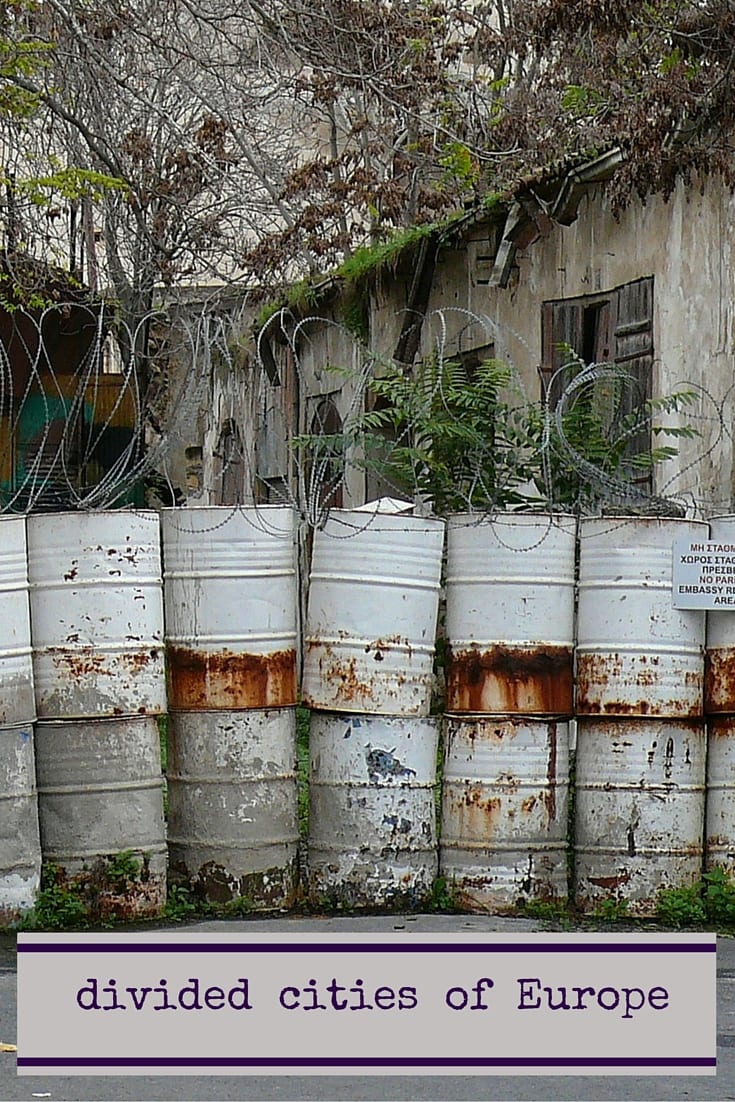

If you enjoyed that post why don't you share it with your friends? That would mean so much to me! Also be sure to join 30.000+ fellow travelers and follow me on Facebook, Twitter, or Instagram for travel updates and even more pictures! If you don't want to miss new posts sign up to my newsletter or follow on Bloglovin!



15 Comments
Travelwriticus
02/01/2016 at 14:38The former Austrian Görz is divided in Gorizia (Italy) and Nova Gorica (Slovenia). If you reach the city by train (the railway station is located in Slovenia) you have to cross the state border in order to get the bus to the old city center.
kami
07/01/2016 at 23:32oh, I didn’t know about that even though I heard about the city of Nova Gorica! Thank you for letting me know, I will have to check it out once I have a chance!
veriksin
16/04/2019 at 12:50Wow, really interesting article, I didn’t know about Sarajevo, thank you for all the information.
The concept of one city in the past, nowadays divided by the border into two in different countries is called twin-cities, I took part at the research at the example of České Velenice (Czechia) and Gmünd (Austria). There is also Gradiška (Bosnia and Hercegovina) and Stara Gradiška (Croatia). Pretty interesting reading about this topic is in Garrard, John (2018): Twin Cities: Urban Communities, Borders and Relationships over Time.
kami
27/04/2019 at 13:05Thank you, I will definitely try to find this book as I’m very much interested in the topic too!
Tina
17/11/2021 at 18:51Mostar in Bosnia Herzegovina, where I am from, is also a divided city. You surely have heard of the old bridge.
If you are interested to learn more about life in a divided city, check out my article
https://acoupleofcountries.com/2021/10/mostar-from-the-perspective-of-a-native-traveler/
Safe travels!
kami
25/11/2021 at 18:37Thank you! Of course I know Mostar’s history as well. I will definitely read the article. cheers!
Ewa
02/01/2022 at 16:59Valga (Estonia) / Valka (Latvia)
Eze
13/01/2023 at 16:28Sarajevo is not city in two countries .
Its in one Country Bosnia and Herzegovina .
Also Mostar is in the same country .
Ian Martin
08/02/2023 at 03:22The best example is the village of Baar-le-duc on the Netherlands – Belgium border that has multiple enclaves , border passing through bars, supermarkets even houses. Of course the currency is now the same .
kami
20/02/2023 at 12:58ah yes, I’ve seen pictures of this place online! Would love to visit it one day. Thank you for mentioning it!
Ian Martin
08/02/2023 at 03:24Sorry I put wrong name, it’s Baar le Herzog and Baar Nassau
Pavol
24/08/2023 at 10:12Veľké Slemence (Slovakia)/Malé Slemence (Ukraina), are actually not cities but villages, formerly a single village Slemence in former Czechoslovakia, divided by Stalin in 1945 when he ripped off its most eastern part Підкарпатська Русь – Pidkarpats’ka Rus’ or Закарпаття – Zakarpattja from it and anexed it to Soviet Union.
Pavol
24/08/2023 at 12:48Komárno (Slovakia) / Komárom (Hungary)
Pavol
27/08/2023 at 22:01Balassagyarmat–Tótgyarmat (in Hungarian language), or Balážske Ďarmoty – Slovenské Ďarmoty (in Slovak language) has become two separate municipalities in 1919, when border between Czechoslovakia and Hungary was drawn along the Ipel river. A small part of Balassagyarmat which was north of Ipel river, was named Slovenské Ďarmoty.
kami
11/09/2023 at 11:51thank you for your input, I really aprreciate it